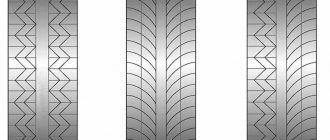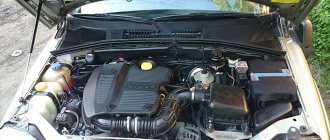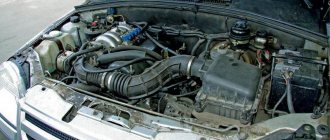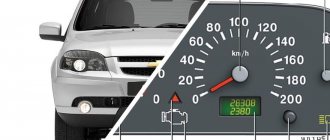Many owners of domestic cars are thinking about modifying their “iron horses”. Considering that more modern models are equipped with injectors, it is possible to install a 16-valve power unit on them. The Niva-Chevrolet with an engine from the Priora, as well as classic VAZ models with a similar modified engine, are widely popular.
Features of installation of the power unit
Installing a Priora engine on a Niva-Chevrolet or VAZ 2107 will take one or two days from a specialist. But first you should devote a lot of time and money to preparatory work. First you need to buy the engine itself. If you purchased a used motor, you need to rebuild it, which will further extend its service life.
Another advantage of disassembling and inspecting the unit is the ease of installation of the transition elements and cylinder block, especially if the parts for the Chevrolet Niva with the Priora engine were made by hand. It is better to carry out manipulations with a screwed oil pan, which will also require modification.
Modified options
Which is better Chevrolet Niva or Niva 2131
Since it is not always possible to supply an engine of a certain foreign car, it is worth considering imported production options that require a little modification:
- The first candidate will again be the French engine from Peugeot XUD 11 series. Since the power of this unit is higher than that of the previous model, some changes will need to be made to the design of the Niva - replacing the gearbox. An acceptable option is a gearbox from Fiat Polonez. In addition, a good solution would be to replace the front supports of the power plant fasteners, pan and exhaust system. It is also worth replacing the drive elements with similar parts from the Chevrolet Niva.
Start of preparatory work
Preparations for installation should begin by dismantling the flywheel of the new power unit. Its teeth will be incorrectly positioned in relation to the starter gear. It is necessary to purchase a suitable crown and place it on the flywheel.
It must be taken into account that the Chevrolet Niva with the Priora engine is modified only in the engine part. The gearbox remains unchanged, so care should be taken to ensure reliable and correct joining of these two blocks. It is optimal to carry out this operation using a special adapter plate. You can buy a ready-made element or make it to order. An alternative to connecting the gearbox and engine would be to fix the engine cylinder block directly to the gearbox. In this case, only three mounting bolts will be involved. Many car enthusiasts who have tested this in practice claim that the clutch is quite reliable.
That very moment: test drive of LADA 4×4 with LADA Priora engine
I just want to exclaim: “Well, AVTOVAZ, why the hell couldn’t you do this yourself?!” But we won't shout. Because, firstly, we roughly know what the hell (about a billion different reasons), and secondly, we are not going to ask stupid questions. It’s much more interesting to ride and understand whether the mutant turned out to be suitable.
The flocked panel no longer looks so orphan-like, the leather steering wheel is a little more comfortable to grip, and it’s more comfortable to sit on the seats, which, in addition to the leather upholstery, have a reinforced frame. It’s just a pity that such a seat cannot fundamentally change the driving position of a Niva anyway. The “tuning” combination is also not bad (it’s certainly more interesting than the standard one), and the only thing that infuriates it is the blue background of the trip computer display. The fuel remaining indicator is incredibly simple - just a stupid arrow, no red zones or buzzer. Thanks to this, we returned from the test with one liter of fuel on board - we only noticed the shortage at the very end.
Needless to say, we got carried away by the trip! A steel roof rack would be useful on a long journey, but power bumpers (the front one has a built-in winch) and a “ski” for protecting units made of five-millimeter metal may well come in handy even on a short outing. After all, the car is a real provocateur: the rear self-block, suspension lift, toothy off-road tires and arches cut out for this purpose are enough for Niva to gain almost complete freedom on the roads.
Where on a stock car you will definitely “throw away”, on this one you can fly almost without looking back. The car swallows huge holes, does not nod and does not “goat”. Calmly passes mind-blowing “diagonals”. Cheerfully flies into brutal climbs. Exactly cheerfully - so that you clearly understand: a standard car would have “died” even in the middle of this ascent. And the reason for the cheerfulness is the VAZ-21126 engine, mated to a completely standard Nivov transmission.
And the VAZ is still there
This 1.6-liter 98-horsepower sixteen-valve engine is found on the LADA Priora, Kalina and Granta, and along with the eight-valve engine from front-wheel drive cars, AVTOVAZ engineers have long been trying on the LADA 4×4. However, things would still be there (read - the project would remain a project), if not for the world of tuning. In the case of the presented “patient” we are dealing with a completely serious approach to the matter. The guys who built the car have an engineering staff and a production workshop with modern equipment. The car was built to order in a single copy, but the solutions found on it are planned to be replicated and offered to customers, both in the form of a turnkey car, and in the form of a kit for self-installation.
The engine was placed longitudinally under the hood, and so that it would not rest against the engine shield, it had to be moved forward a little. As we can see, there is minimal space at the engine shield, but there is even plenty of space left for the radiator. It would be possible to move the box forward, but then it would rest against the steering rods. Therefore, the box remained in place, a spacer appeared between the crankshaft and the engine flywheel, and the box is connected to the engine through another spacer, consisting of three parts. Such solutions are not new, but subsequent reliability, as a rule, is greatly affected by the level of execution.
For perfect docking, the engine had to be slightly “placed” on the right side in the direction of travel of the car - the level of rotation around the longitudinal axis was one degree. The docking was designed with the aim of leaving a maximum of standard parts in the transmission - clutch disc, pressure plate, release bearing - and minimizing the distance between the flywheel and the crankshaft. The flywheel was installed modified from Vesta; its gearing is like that of a “classic” one, but the connecting dimensions are like those of a “prioromotor” flywheel. The docking area is protected from dust and dirt by an original steel casing.
The metal brackets for the engine mounts remained standard Niv ones, the rubber cushions were taken from Priora, but the engine mounts themselves are completely original, as is the bracket for attachments. We had to re-lay the lines of the cooling system, and also reshape the front part of the exhaust - take the tuning “spider” from Priora and adapt it to the “belly” of the Niva.
The engine crankcase also had to be modified. In order to diverge from the front axle gearbox, but at the same time maintain the required volume of the crankcase, it was seriously cut and actually welded again. They also rerouted the wiring harnesses, because instead of the standard Niva “hydrach”, which did not fit very well into the new configuration of the engine compartment, they stuck a Prior electric booster here.
Of course, we changed the engine firmware - the one available on the market for the Priora was “made friends” with changed gear ratios. By the way, the main pair in the car is quite large - 4.7, for off-road 30-inch wheels.
"Niva-Chevrolet" with an engine from "Priora": the main stage of preparatory work
The updated engine will be slightly moved towards the cabin. To install it correctly, it is necessary to cut out a part of the metal partition separating the engine unit and the interior of the car. It is recommended to carry out the manipulation carefully so as not to cut out the excess part, since the element being processed ensures the rigidity of the body. Alternatively, you can use a grinder saw if you have the appropriate experience.
A support bearing will need to be installed at the end of the crankshaft of the newly installed motor. VAZ-2107 and 21213 Niva with an engine from Priora require element adjustment. Any turner will help you cope with this problem; the work will not take much time. Adapters with holes should be prepared for the motor mounting pads.
The final stage of preparatory work
If the car being modified was equipped with a carburetor system, you should install a remote electric fuel pump, a gas pedal drive with a cable, and a fuel filter. A Volga injection element with an injector is quite suitable. You will also need to install a special adapter for the clutch block.
If the car is equipped with a fuel injection system, then installing and connecting the control electronics will not pose any special problems. When installing a VAZ-2112 or Priora engine on a Niva, you will have to spend a lot of time on preparation. However, the subsequent effect and the new “heart” of the iron horse are worth all the effort.
Installation of the power unit
Having completed all the preparatory work, you can begin installing the motor. For a professional repairman, this process rarely takes more than one day. Personal participation will require more time and effort.
The greatest amount of work will have to be done with the modification of the cooling and exhaust systems. An old manifold from a VAZ of early production will not fit the “Prior” engine, as well as connecting pipes and some elements of the cooling system. It is difficult to purchase the parts in question ready-made, but they can be made to order or using gas welding.
The fitting of the products in question is carried out after the new power unit with the cylinder block is installed on the cushions. Experts recommend moving the neck for pouring oil into the engine, since it rests against the partition, which complicates the process of filling the mixture and installing the valve cover.
Engine advantages
The engine with 16 valves turned out to be very successful. Many owners install it not only on VAZ “classics”, but also on new models (“Niva-Chevrolet”, 2109, 2114). On such cars, installation of the power unit is greatly facilitated due to the combination and identity of most of the elements.
The VAZ-2107 with an engine from Priora has the following advantages:
- high engine performance in terms of torque, power and fuel consumption;
- the product is created using modern technologies;
- the versatility of many elements and components, compatible with other VAZ engines, allows you to install the unit on different car models;
- the design of the power unit from Priora does not imply constant adjustment of valves and tightening of the timing chain;
- The motor is considered one of the best among domestic units.
A Chevrolet Niva with an engine from a Priora, the price of which depends mainly on the general condition, turns out to be more economical without losing maneuverability and power. The unit will cost from 35 to 100 thousand rubles.
Modernization of the heating device in a Chevrolet Niva car
Chevy Niva electrical diagram
Before the heater is improved, it is necessary to understand the principle of operation of the dampers. Then you should completely dismantle the decorative panels located on the left side of the Chevrolet Niva stove. The next step is to remove the regulator responsible for the position of the dampers. When optimizing your car, you need to understand the design of the heating device, which will allow you to dismantle the “unnecessary” equipment without unnecessary delays. The motorist must remove the lower part of the regulator, through which the front flap is activated.
When dismantling all the plastic elements, you should not try to abruptly remove the parts, since almost all the components of the device being disassembled are made of fragile plastic, which breaks even under more or less significant impact. If, however, due to haste or carelessness of the owner of the movable property, the lower part of the device being removed gets a crack, it can be hidden with a soldering iron.
Modifying the Chevrolet Niva stove with your own hands involves the need to secure the lower damper so that it is tightly closed in the upper position. Of course, such a modernization completely eliminates the ability of the motorist to take advantage of the “front” position, however, it provides many other more significant advantages.
To tightly fix the front flap, you will have to make a small-sized bracket with your own hands (it is best to resort to using a simple tin), which will be held on by a self-tapping screw.
Once the “front” of the stove is in the closed position, you will need to think through the trajectory of the element that regulates the simultaneous supply of heat to the glass and legs. It is worth noting that skilled craftsmen, when upgrading their Chevrolet Niva, use all available means, in particular, an ordinary discount card will be useful for optimizing the stove. By means of which a cut line is drawn, then the element is glued with cyanoacrylate and filed to size with a file.
The modification of the Chevrolet Niva heater should be completed after the hand-cut part is glued with superglue.
In fact, modifying the Chevrolet Niva stove can largely correct the position of the standard device. As a result of simple manipulations and cheap expenses, the motorist will receive a more advanced heater, through which it becomes possible to smoothly regulate the volume of warm air flow entering the cabin, warming not only the face, but also the legs.
Technical characteristics of the latest modifications of the Priora engine
The common model of the engine in question is released under the index 21126. The unit has a displacement of 1.6 liters and a power of 98 horsepower. In 2013, a new modification was released, which is equipped with the VAZ-2107.
For greater clarity, below is a table with technical indicators of the Priora power unit (21127).
| Year of issue | 2013 |
| Material of manufacture | Cast iron |
| Cylinder arrangement | Inline/4 |
| Number of valves | 16 |
| Piston stroke (cm) | 7,56 |
| Cylinder diameter (cm)/compression ratio | 8,2/11 |
| Working volume (cc. cm) | 1596 |
| Power (hp) | 106 |
| Torque (Nm) | 148 |
| Fuel consumption per 100 km, combined cycle (l) | 7 |
Motor device
Briefly about how the VAZ 2123 Chevrolet Niva engine works.
Cylinders
They were combined with the upper part of the crankcase. Like most VAZ engines, this power unit has cylinders operating in a 1-3-4-2 pattern. The lower part of the cylinder block is connected on five supports to the crankshaft.
1 — tension roller of the air conditioning compressor drive belt; 2 — air conditioning compressor drive belt; 3 — air conditioning compressor clutch; 4 — thermostat; 5 — throttle assembly; 6 — outlet pipe of the cooling jacket; 7 — coolant pump pulley; 8 - phase sensor; 9 — tension roller for the auxiliary drive belt; 10 — cylinder head; 11 - generator; 12 — power steering pump pulley; 13 — support roller for the auxiliary drive belt; 14 — cylinder block; 15 — auxiliary drive belt; 16 — crankshaft position sensor; 17 — auxiliary drive pulley; 18 — air conditioning compressor drive pulley; 19 — oil pan; power unit support; an exhaust manifold; receiver; cylinder head cover;
Crankshaft
Five-legged. Cast from cast iron. If necessary, the journals can be reground with a diameter reduction of 0.25; 0.50; 0.75 and 1 mm.
Also interesting: Buy Niva Lynx in Vladimir - prices for the new Lada “Bronto” (Niva Pickup)
Exhaust valves
Welded in two parts. One is an alloy of chromium, nickel and molybdenum, and the other is made of multi-component steel. The operating temperature of the exhaust valves is 700-900 degrees, since during engine operation they are heated by processed gases. In order for them to withstand such temperatures, a special heat-resistant alloy is applied to them.
Intake valves
Their rods are treated with nitrogen and hardened under the influence of high frequency current. This is enough to withstand operating temperatures of 350-500 degrees.
Pistons
The VAZ 2123 engine has pistons cast from an aluminum alloy. A layer of tin is applied to them to make the process of breaking in the car faster. The piston stroke is 80 mm, and it itself has a diameter of 82 mm. The compression ratio is at 9.3 atmospheres.
Camshaft
Cast from cast iron and installed in a removable aluminum housing. Its rotation is carried out by a single-row roller chain.
Chain
It is stretched by a spring-hydraulic tensioner. Its size has increased significantly. Until the engine starts, the tension is carried out by a spring, and during its operation it is provided by oil pressure.
Attached to the block itself with 11 bolts. Centering is performed using the power of two bushings.
Crankcase ventilation system
Closed, and crankcase gases are discharged through the oil separator into the intake pipe. From there they are transferred to cylinders and burned.
New items equipped with the engine in question
Soon, VAZ developers plan to put into mass production the updated Niva, which will be equipped with an engine from the Priora. The new power unit will make it possible to significantly reduce fuel consumption, while increasing the vehicle’s speed performance.
The plant is actively working to adapt the engine to the Niva. The car can be produced in two variations: with a unit with a capacity of 98 horsepower or a modified analogue that pulls 106 horses and has a torque of 148 Nm. In addition to the updated engine, the car in question will receive a new steering rack, subframe, improved seats, heating, and air conditioning will be installed.
"Chevrolet Niva"
"Niva-Chevrolet" with an engine from "Priora" has the following technical characteristics of the power unit, presented in the table.
| Motor location | Longitudinal (front) |
| Volume/power (cc/hp) | 80/1700 |
| Injection system | Distributed |
| Cylinder block | Inline/4 |
| Piston stroke/compression ratio | 80 mm/9.3 |
| Turbocharging | Absent |
| Number of valves | 16 |
| Type of fuel | Gasoline AI-95 |
| Cylinder diameter (cm) | 8,2 |
| timing belt | HE IS WITH |
The car reaches a maximum speed of 150 km/h, acceleration time to hundreds is 17 seconds. The fuel tank holds 58 liters, while consuming 9.6 l/100 km in mixed driving mode.
Methods of payment for goods
- It is possible to send cargo with a thirty percent (30%) advance payment with blocking and removal of blocking upon full payment.
- It is possible to send cargo without prepayment, provided that the buyer pays for the services of the transport company in both directions at the branch of the transport company.
- Sending by PEC by cash on delivery with the condition of prepayment of delivery in both directions (this way we are safe from fraudsters) - in PEC before payment you can inspect the goods received, PEC charges a commission for this service in the amount of: 1.5% for cash and 3% for non-cash calculation
You can make any changes (tuning/additions) to the standard engine configuration BUT the warranty will be 3000 km or 3 months of operation
You can also make any set of attachments (standard and non-standard) if you have some of the equipment - write what to add/exclude from the set, the manager will write a price change.
Number of cylinders: 4
Cylinder displacement, l: 1,690
Compression ratio: 9.3
Rated power at a crankshaft speed of 5000 rpm: 59.5 kW - (81 hp)
Cylinder diameter, mm: 82
Piston stroke, mm: 80
Number of valves: 8
Minimum crankshaft speed, rpm: 750-800
Maximum torque at 4000 rpm, N*m: 127.5
Cylinder firing order: 1-3-4-2
Gasoline octane number: 95 (unleaded)
Fuel supply system: Electronically controlled distributed injection
Spark plugs: AU17DVRM, BCPR6ES(NGK)
What does the engine package include: Block, crankshaft, pistons, rings, connecting rods, bearings, half rings, oil seals, cylinder head assembly with camshaft, crankshaft pulley, flywheel, oil pump with oil receiver, iron oil pan (aluminum can be installed - check price with manager), valve cover, gas distribution mechanism with a closed cover, spark plugs, generator with mount (bracket), distributor (if equipped), carburetor, fuel pump (if carburetor), intake and exhaust manifold receiver (cat. manifold), throttle valve (if injector), all rubber hoses, all small brackets, all belts: generator, toothed, on classic engines: - chain. Dipstick ramp with injectors and injector wiring. Sensors: oil, temperature, phase sensor (if injector), knock sensor, antifreeze drain plug, dipstick, break-in oil (10v40 Lukoil semi-synthetic, recommended after break-in 1000-1500 km, oil change).
Packaging: everything is mounted on a wooden stable pallet, screwed on, the engine itself is made of cardboard on all sides and wrapped with stretch film. The transport company is packed in a wooden box. At the request of the client, we can dismantle any component of the engine or replace it with a non-standard sports or tuned part.
Owner reviews
The best recommendations can be given by the direct owners of the model in question, who have tested the car in various weather and road conditions. If you take a Chevrolet Niva with an engine from a Priora, reviews from owners indicate that the car has changed for the better. Special benefits include the following:
- the power unit has a solid reserve before major overhaul;
- fuel consumption has decreased, quite noticeably;
- high speed characteristics and power;
- reliability of the unit;
- high performance characteristics of the motor.
It’s not difficult to create a Niva-Chevrolet with an engine from a Priora. Some modifications to the cooling system and the seat for the unit will be required. All manipulations can be completed in just a couple of days.
The disadvantages of the device in question include one point that was noticed by some owners and specialists. If the timing belt breaks, the pistons inevitably interact with the valves, causing the latter to bend. To avoid this, you can purchase special pistons with recesses for the valves.
Engine tuning
While maintaining the resource declared by the manufacturer, the 2130 engine can be generated up to 120 hp. With. In principle, the engine potential allows for a power of 200 hp. pp., however, in this case, tuning turns out to be too expensive, and operating costs increase sharply.
Classic tuning is carried out according to the following scheme:
- boring the cylinders up to 84 mm - the center-to-center size allows this without reducing the strength of the block;
- using a crankshaft with a piston stroke of 86 - 90 mm - it is necessary to select pistons with an offset pin and short connecting rods;
- modification of the manifolds - “spider” on the exhaust, grinding of the internal surfaces of the intake tract;
- Installing a more evil camshaft;
- Boring of cylinder head channels.
Maximum cylinder bore
When using lightweight valves and reducing the mass of the flywheel after boring the cylinder head channels, the power increases to 100 hp. With. The Nuzhdin 10.5 camshaft itself is capable of adding about 10 hp to the engine. With.
Thus, the ICE 2130 really improved the performance characteristics of the 21213 engine taken as a basis. The torque increased, and at low speeds, and the throttle response improved. Additional modernization of the internal combustion engine is possible due to the built-in potential.
Peculiarities
The Niva-Chevrolet with the Priora engine has some features compared to similar classic VAZ models. Firstly, installation of the power unit is simplified, since the location of the motor is identical. Secondly, variations were produced with almost the same engine as the Priora. In addition, a new production version of the domestic SUV is being developed, to which the engine from Priora, considered one of the best among our manufacturers, is adapted.
Considering the high service life and versatility of the motor in question, its installation is advisable on many VAZ models. Moreover, relatively modern modifications will require a minimum of modifications, while more classic versions will gain new power and speed.
Having studied all the characteristics of the engine, it can be noted that the Priora power unit is a reliable and well-developed engine. The use of modern technologies and new developments has allowed domestic developers to create a reliable and high-quality unit.
Additionally, this unit is supported by reviews from owners and the desire of many car enthusiasts, despite the additional costs of time and money, to equip their vehicle with a Priora engine.
We install the engine on the Niva from a foreign car. It's worth it
Why do some owners install a foreign car engine on the Niva? Old Russian cars like the VAZ-2121 Niva, VAZ-2107, VAZ-2108 at this time may seem at least not profitable, and at most not at all capable.
At the moment, you won’t see an entrepreneur driving a Veil, although not long ago it was one of the most massive cars; its cross-country ability was unattainable for the EU and the USA. But not now…
What problems can installing a foreign car engine on a Niva help solve? If you need to think about what and how to do to make the Niva profitable and convenient for the modern world, then change your heart! In fact, you can put almost any engine removed from a foreign car on the Niva.
However, the engine must meet several requirements
: to fit inside the hood of the car so as not to cut off additional parts (this can have a bad effect later_. And most importantly, the engine power should not greatly exceed the power of its predecessor. After all, if you install an engine that is too powerful, the car’s design simply won’t withstand it; cars of that time were not created for power and speed, but for reliability.
Read
The new foreign car can barely withstand a head-on blow with the Niva, and VAZ has a great chance of winning. But Niva, when making a sharp turn at a speed of 150 km. at an hour it will most likely fly into a ditch, and the foreign car will continue on its way.
Bottom line
Having studied all the characteristics of the engine, it can be noted that the Priora power unit is a reliable and well-developed engine. The use of modern technologies and new developments has allowed domestic developers to create a reliable and high-quality unit.
Additionally, this unit is supported by reviews from owners and the desire of many car enthusiasts, despite the additional costs of time and money, to equip their vehicle with a Priora engine.
Niva 4x4. installation of engine 1.9 l, 16 cl. 126 forces, e-gas
K-POWER Workshop video. installation on Niva
16-valve
engine
from Priora (volume 1.9 liters, square 84x84.
As was said, many engines from other cars can be installed on the VAZ-2121, but the most preferable are
: XUD9TE, D8A. 1.9 l, 90 hp, fits perfectly into the Niva, has 190 Nm at 2200 rpm, spins up to 4400 rpm, weighs a little more than 120 kilograms, will need heating of diesel fuel for the winter.
The second contender is an import diesel turbocharged FIAT-CMD with a volume of 1.93 liters. and 90 hp, the cost of a new engine ranges from 280,000 to 297,000 rubles, but this is not profitable and it is better to buy a used one.
Read
Another option can be used with BMW 1.6-1.8 liters; diesel is even much better.
Possible from a Mercedes 1.8 liter
. Many people have a 2.3-liter Fiat Ducato engine on the VAZ 2121, but this option is not the most budget-friendly and not the most powerful; the previous options are better suited for the Niva.
To finally tune the Niva, you can install a turbine, turbocharged Nivas, an incredible picture. However, the installed turbine can have a bad effect on the transfer case and it simply won’t hold up.











